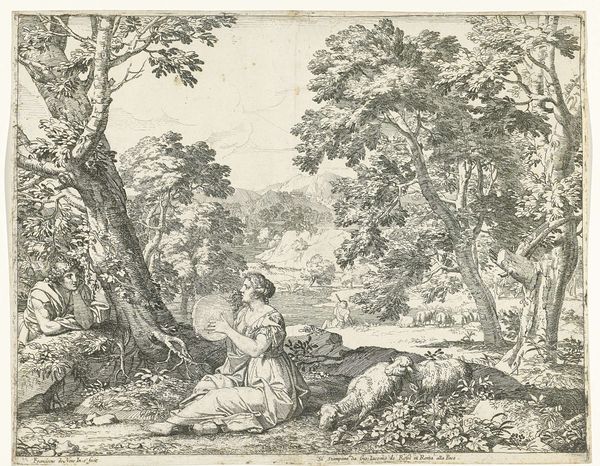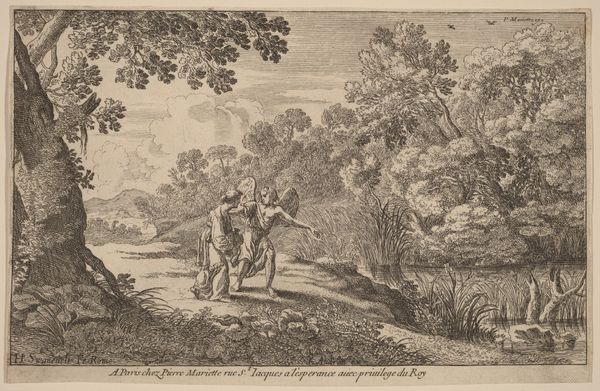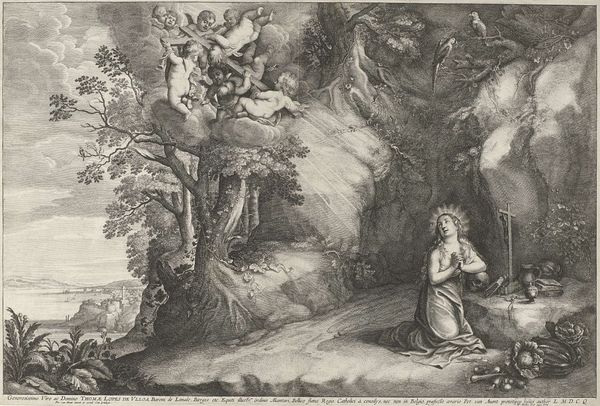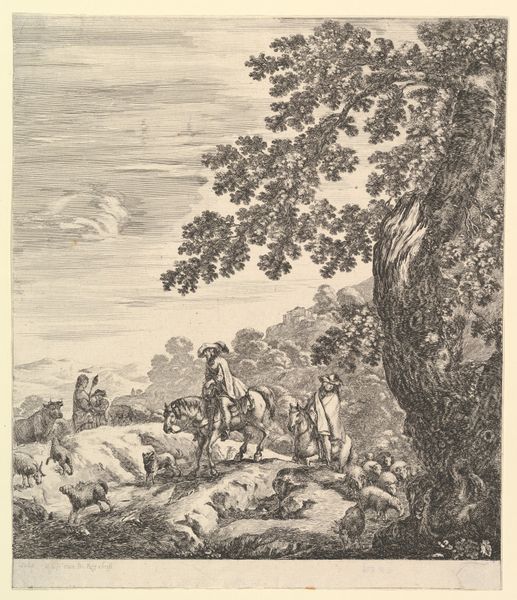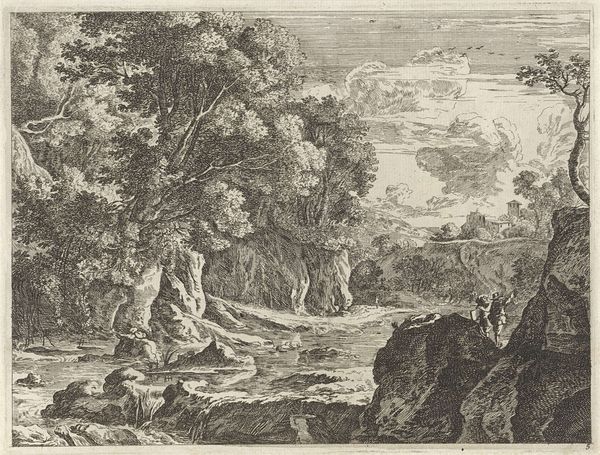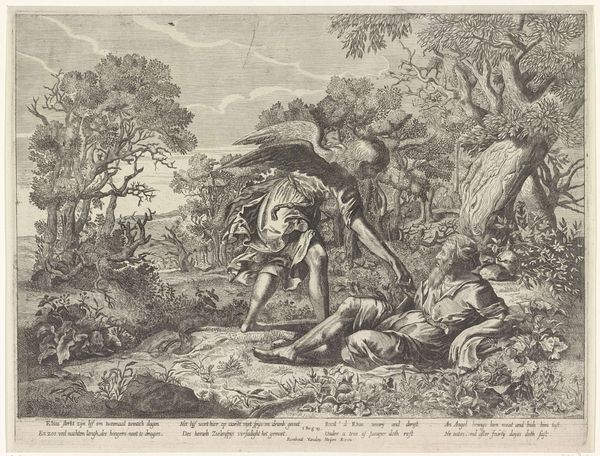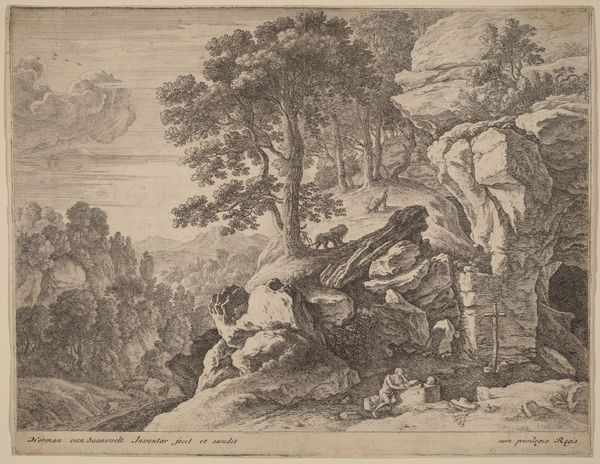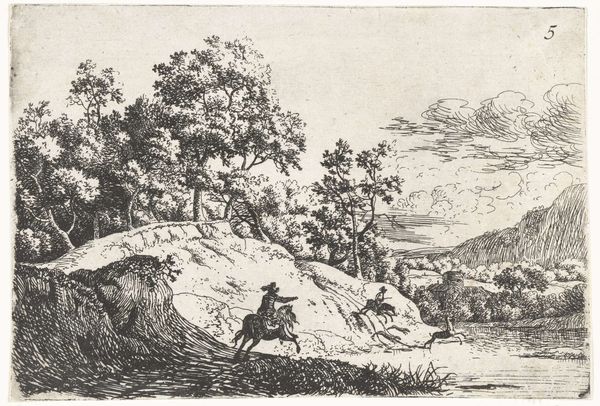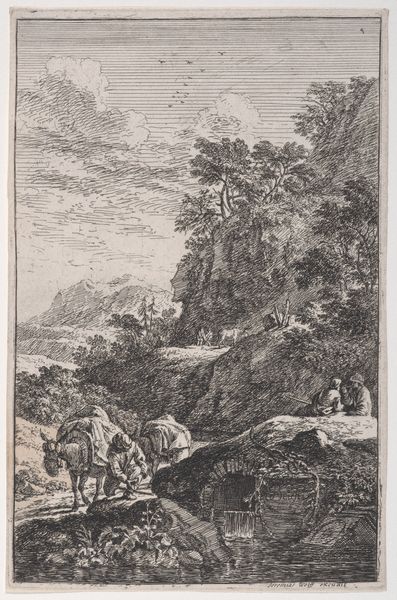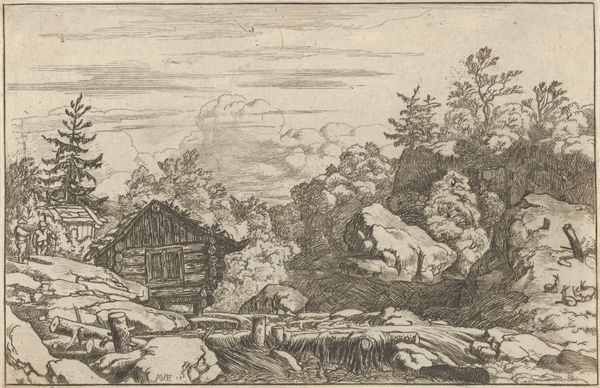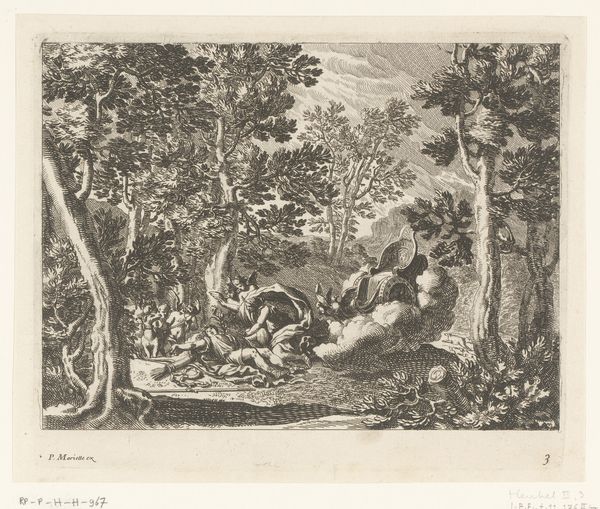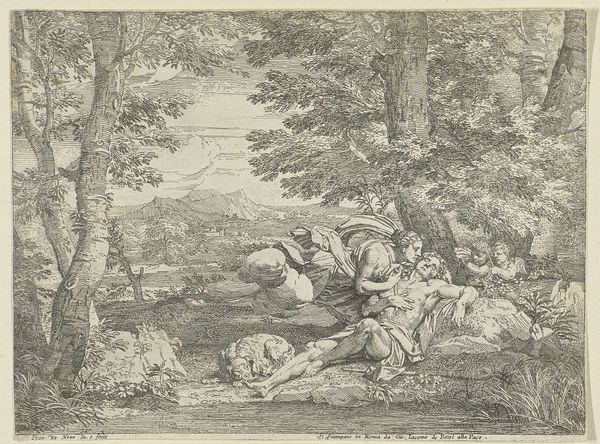
print, etching
#
baroque
# print
#
etching
#
landscape
#
figuration
#
history-painting
Dimensions: height 161 mm, width 244 mm
Copyright: Rijks Museum: Open Domain
Gillis Peeters the Elder made this print, "Jupiter en Callisto," sometime in the mid-17th century, using etching. This printmaking process involves coating a metal plate with a waxy, acid-resistant substance, drawing the design, and then immersing the plate in acid, which bites into the exposed lines. The magic of etching lies in the artist's hand and control over the acid. Varying the depth and width of lines gives the print its tonal range. See how the subtle shading creates the depth and texture of the landscape, from the foreground rocks to the distant hills. This attention to detail and the labor-intensive process contrast sharply with our modern age of digital reproduction. The finished print, like this one, would have circulated widely, bringing art to a broader audience than ever before. So, thinking about the materials, making, and social context, we can see how this etching embodies a pivotal moment in art history, democratizing access to images through the skilled manipulation of metal, acid, and ink.
Comments
No comments
Be the first to comment and join the conversation on the ultimate creative platform.

